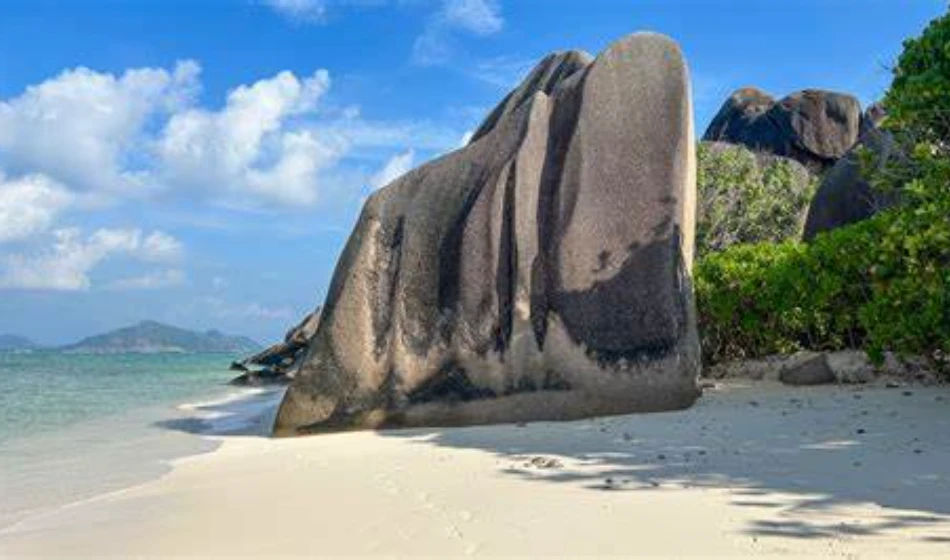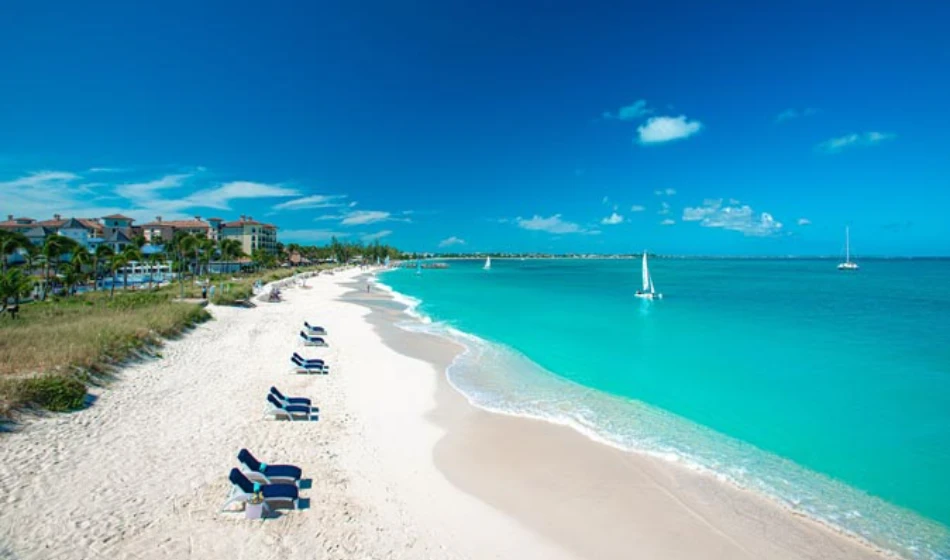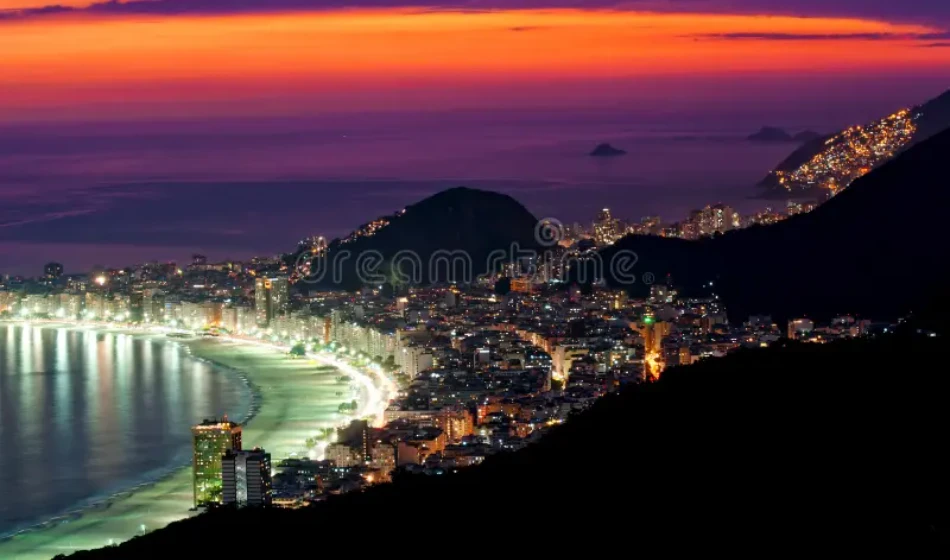Exploring the world’s most iconic beaches reveals breathtaking scenery, cultural richness, and unique geological wonders that make each destination extraordinary. These beaches have not only become symbols of tropical paradise but are celebrated worldwide for their mesmerizing allure. Here are some unforgettable coastal spots to add to your travel list.
Anse Source d’Argent, Seychelles

On the island of La Digue, Seychelles, Anse Source d’Argent presents a dreamy tableau of powdery pink sand, towering granite boulders, and swaying palms. Photographed extensively and often appearing in travel magazines, this beach’s surreal beauty is preserved by being part of a protected nature reserve. Visitors can immerse themselves in the tropical paradise or snorkel along the reefs to explore its underwater world.
Grace Bay, Turks and Caicos: A Caribbean Jewel

Grace Bay Beach on Providenciales Island, Turks and Caicos, is a Caribbean gem renowned for its powdery white sands and remarkably clear waters. With visibility that stretches for tens of meters, it’s ideal for swimming, snorkeling, and scuba diving. Nearby Princess Alexandra Marine Park adds to its allure, with a rich variety of marine life, making it an attractive site for ocean explorers.
Navagio Beach, Zakynthos, Greece
Nicknamed Shipwreck Beach, Navagio Beach on Zakynthos Island is a remote, breathtaking cove enclosed by towering limestone cliffs. Only accessible by boat, it’s famous for the rusted shipwreck embedded in its sand, which washed ashore in 1980. The turquoise waters and dramatic cliffs make this a must-visit for adventurers and photographers alike.
Copacabana Beach, Rio de Janeiro, Brazil

Copacabana Beach epitomizes Rio’s lively spirit. This iconic 2.5-mile beach is filled with visitors playing volleyball, vendors selling Brazilian street food, and locals celebrating samba. The blend of natural beauty, Art Deco architecture, and Rio’s mountain views makes it one of the world’s most vibrant beaches, offering a slice of Brazilian culture with every wave.
Pink Sands Beach, Harbour Island, Bahamas
True to its name, Pink Sands Beach in the Bahamas is one of the world’s rare pink-sand beaches, tinted by microscopic coral insects. This secluded stretch, especially enchanting at sunrise and sunset, provides an ideal getaway for couples or those seeking a quiet escape. The pink hue and gentle waves make it a uniquely romantic destination, perfect for unforgettable photos and leisurely strolls.
Baia do Sancho, Fernando de Noronha, Brazil
Baia do Sancho is often hailed as one of the most beautiful beaches in the world. Located in the Fernando de Noronha archipelago, a UNESCO World Heritage site, it’s accessible by boat or a steep descent, which makes the pristine beach an exclusive treasure. Snorkelers and divers find paradise here, where dolphins, sea turtles, and vibrant coral reefs await in the clear waters.
Seven Mile Beach, Grand Cayman, Cayman Islands
Known for its long, soft white sands, Seven Mile Beach on Grand Cayman is both spacious and welcoming. Despite its popularity, the beach offers ample room for everyone to relax. Visitors enjoy a variety of activities, from snorkeling to jet skiing, while luxurious resorts and beachfront bars create an enjoyable mix of relaxation and entertainment.
Elafonissi Beach, Crete, Greece
Elafonissi Beach, with its pink sand and shallow, lagoon-like waters, is one of Crete’s hidden gems. The beach’s unique color results from crushed shells blending with natural sand, creating a stunning visual contrast against the turquoise waters. This peaceful spot is perfect for anyone looking for a remote beach experience.
Reynisfjara Beach, Vik, Iceland
Iceland’s Reynisfjara Beach stands apart for its black volcanic sand, striking basalt columns, and cliffside formations. Located along Iceland’s southern coast, the beach is famed for its “sneaker waves” and the dramatic rock pillars known as Reynisdrangar. A striking destination for photographers and nature enthusiasts, Reynisfjara is one of the most memorable non-tropical beaches in the world.
Whitehaven Beach, Whitsunday Island, Australia
In Australia’s Whitsunday Islands, Whitehaven Beach is celebrated for its unique swirling patterns of white silica sand and turquoise water. Particularly stunning at Hill Inlet, this eco-friendly beach is accessible only by boat or helicopter, making it a serene retreat for those seeking an unspoiled paradise.
How to Make the Most of Your Beach Experience
To maximize your visit, consider these tips:
- Plan for Seasonal Crowds: Some iconic beaches are busiest during peak seasons, like summer holidays.
- Respect Nature and Wildlife: Be cautious to avoid disturbing local flora and fauna.
- Stay Safe in the Water: Understand each beach’s water conditions, as some may have strong currents or steep drop-offs.
- Capture the Moment: Take photos during golden hours—sunrise and sunset—to capture stunning views.
- Reduce Plastic Use: To help preserve these natural sites, use reusable items.
- Participate in Beach Clean-Ups: Many popular destinations have regular clean-ups where you can make a positive impact.
Conclusion: A World of Unforgettable Beaches Awaits
These iconic beaches offer diverse experiences, from the lush tropics of Anse Source d’Argent to the icy volcanic sands of Reynisfjara. Each destination provides a distinct view of Earth’s beauty and the cultures that surround it.
Whether you’re drawn to the Caribbean’s crystal-clear waters, Europe’s hidden coves, or the scenic beaches of the Southern Hemisphere, these legendary shores offer much more than sand and sea. Each destination showcases a unique blend of natural beauty, cultural richness, and opportunities for adventure or relaxation. From capturing the stunning Hill Inlet at Whitehaven Beach to diving alongside sea turtles in Baia do Sancho, each beach offers memories that will linger long after the journey ends.
When planning your travels, consider the local customs, the environmental impact, and the best ways to support conservation. Embracing responsible travel not only enriches your experience but also helps preserve these treasured landscapes for future generations. The planet’s beaches are not just destinations but delicate ecosystems, each with its own story and significance.
So pack wisely, bring your spirit of exploration, and get ready for a journey through some of the world’s most captivating coastal getaways. The beaches await, offering not just scenic beauty but a deep connection to the Earth’s diverse natural and cultural heritage.
FAQs
1. What is the best time to visit these iconic beaches?
The ideal time varies by location. For tropical beaches like Grace Bay or Anse Source d’Argent, dry seasons are best to avoid rain and enjoy clear skies. For popular beaches like Copacabana, visiting during shoulder seasons (just before or after peak) can help you avoid large crowds.
2. Are there entry fees or restrictions for visiting these beaches?
Some beaches, especially those within protected reserves like Baia do Sancho or Whitehaven Beach, may have entry fees or access restrictions to protect the ecosystem. Check local regulations and any seasonal closures before planning your visit.
3. Can I visit these beaches with family or young children?
Many of these beaches are family-friendly, but some, like Navagio Beach or Reynisfjara, may have challenging access or strong currents. Always check local advice on water conditions and accessibility when planning a family trip.
4. What should I pack for a beach day at these destinations?
Essentials include sunscreen, a reusable water bottle, beach towels, and protective clothing. For destinations with water sports, bring appropriate gear like snorkels or fins, but remember to use reef-safe products to help protect marine life.
5. Are there guided tours or excursions available at these beaches?
Yes, many popular beaches offer guided excursions. For instance, boat tours are popular for reaching Navagio Beach, and snorkeling tours are common at Grace Bay. Joining local tours can enhance your experience while supporting the local economy.
6. How can I practice responsible tourism at these destinations?
Respecting local customs, minimizing plastic waste, and avoiding disturbance to wildlife are key. Participating in beach clean-ups, using biodegradable products, and supporting conservation initiatives can make a positive impact on these delicate ecosystems.
